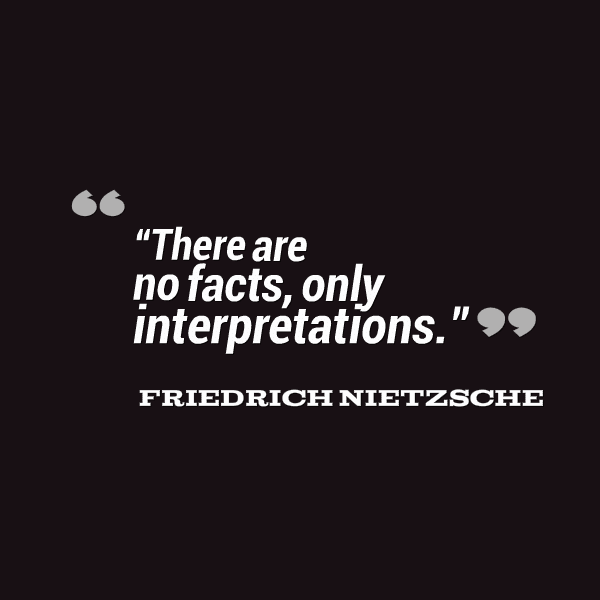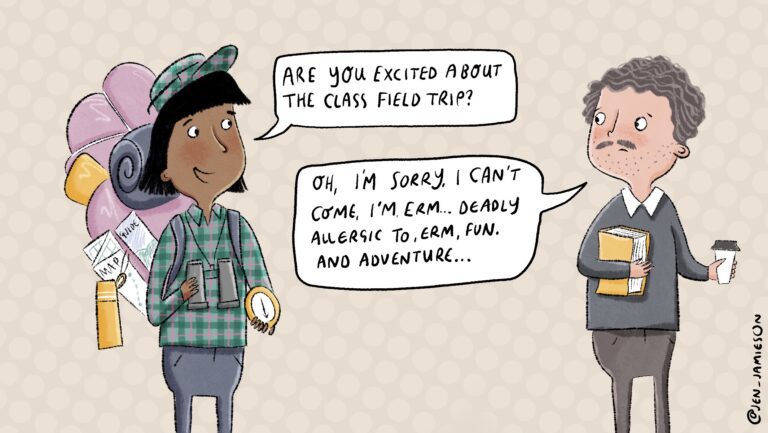During our literature units, I’m always ranting about “perspective.” When I do, students assume I am referring to the point of view from which a piece of literature is written. First person, third person, limited, omniscient. That’s all fairly simple, but I have come to learn that the higher-order thinking involved in analyzing how the point of view impacts the way a story is read is a different ball of wax for students. In short, it can be difficult.
Because students tend to struggle with the idea that a narrator’s perspective is narrow and limited in that he tells the story through his own lens, based on his own experiences, I came up with a lesson that helps illustrate how stories change according to whomever is telling them.
Here is a great exercise I have used with my freshman English students that has really helped drive home the importance of analyzing perspective, and it requires nothing more than a teenager, his or her parents, and an argument.
Talk about a universal theme, right?!
Before every student had access to a laptop, I taught this lesson the old-fashioned way: with paper and pencil. (Did I just date myself?) However you opt to facilitate this activity, the big idea is the same: Our perspective is influenced by our experiences.

Students are instructed to think about a time when they have argued with their parents, or, at the very least, haven’t seen eye-to-eye with them. The conflict could be over a misunderstanding, something that was “unfair,” or a confusing, misleading situation.
Please note: If a teenager in your class claims he has no firsthand experience with this prompt, he is either lying or he is a robot.
Examples of my students’ topics have ranged from them making their parents angry and worried because they missed curfew to students wanting to go somewhere or do something they perceived as harmless, while their parents deemed it inappropriate or dangerous. The basic goal is to choose a topic on which the students’ and parents’ opinions differ.
Once topics have been chosen (and are school-appropriate, of course!), students make two columns on their paper or iPad or iPod or iWhatever: one to list their feelings, opinions and reactions to the conflict, another to list their parents’. They brainstorm for a few minutes, and once they have at least three solid examples for each, it’s time to write.
The students write two paragraphs: The first is from their perspective, written in first person. For the sake of illustration, let’s use the topic of a student wanting to go to a party, but his parents have forbid him. In this first paragraph, he tells the story of how he asked to go to the party, how he felt when his parents said no, and details the reasons why he feels he should be allowed to go. He clearly explains things from his perspective: “I made sure my room was clean and my homework was done, and they still told me I couldn’t go! I’m responsible and make good choices. I have never been in trouble before. My parents should trust me!” This paragraph obviously supports the student’s ideas and opinions and should not read like a list, but more like a retelling of the situation and a descriptive plea to change his parents’ mind.
The second paragraph should be written from the parents’ perspective, but also in first person. This forces the student inside her parents’ heads and requires her to use the previously brainstormed ideas to support Mom and Dad’s reasoning for why he should not attend the party: “I know Joe is a good kid, but it’s not him I worry about—it’s all the other kids who will be there that worry me. Especially that John Doe—he’s a real troublemaker. All the parents talk about him!” Students should take care to include their parents’ emotions. Again, this paragraph should not be a list of reasons or rebuttals—it should be an extensive look into the fears and rationale of the parents.
Upon completing this writing exercise, students begin to think about how the same scenario can be so different based on varying perspectives. A class discussion about how personal experiences shape our perspective transitions nicely into whatever text you’re reading.
Another great activity for analyzing perspective uses the song “Just Give Me a Reason” by P!nk found
here. Rather than write their own paragraphs, students will use these lyrics to explicate how the same relationship can be viewed so differently by the two people in it, drawing conclusions about each individual based on his/her lyrics.
Once students begin to recognize how different perspectives can change their experience with a text, an excellent example, albeit advanced for some, of an unreliable narrator is Poe’s short story, “The Cask of Amontillado.” I’ve taught this story around Mardi Gras so students understand the chaotic setting of the piece, and everyone always seem to enjoy the insanity that unfolds. Nothing screams “perspective!” like a drunk and a crazy dude.
However you teach it, whatever texts you read, perspective is an integral part of reading, understanding and appreciating literature. What’s more is that when a student masters the art of reading texts, he or she can move on to the equally important skill of reading people. Don’t ever say we didn’t prepare you for the real world, kids. Love, Your English Teachers.
Stephanie Jankowski loves words, hates math and has a penchant for finding the funny in life. An English teacher by trade and smack-talker by nature, you can find more of Stephanie on her blog WhenCrazyMeetsExhaustion.com.
Photo credit: Ian Sane via photopin cc


